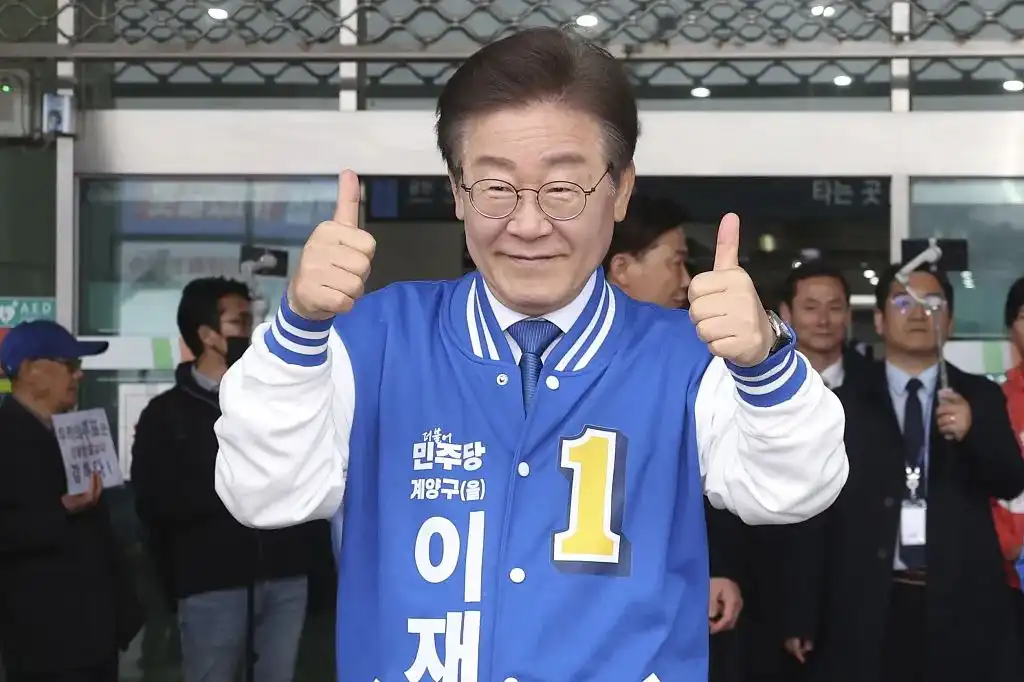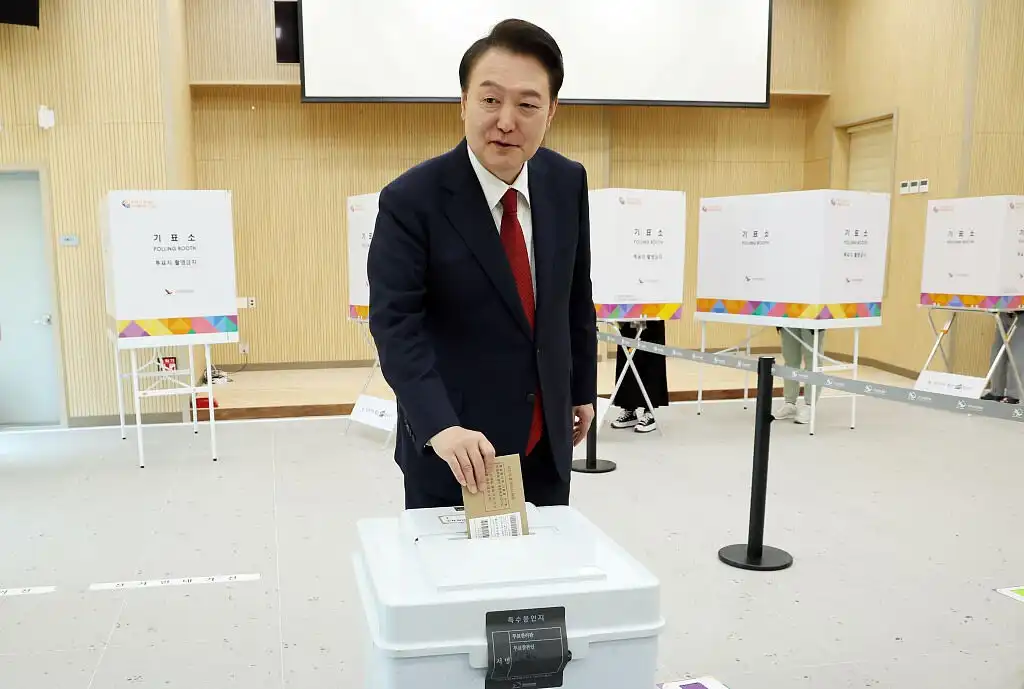South Korea's election changes dramatically:The ruling party was defeated and the president faced a "lame duck" dilemma
According to the latest news from CCTV News on April 11, South Korean Prime Minister Han Duc Soo, the head of the Presidential Office, the head of the Policy Office and the chief secretary all resigned.
Earlier in the day, the counting of votes in the 22nd South Korean National Assembly election was completed. The ruling party suffered a defeat. The largest opposition party, the Common Democratic Party and its satellite parties, won a total of 175 seats, continuing to maintain its status as the largest party in the National Assembly.

On March 28 local time, Lee Jae-ming, leader of the South Korean Common Democratic Party, attended a campaign rally. source:visual China
Among South Korea's 254 electoral districts, the largest opposition party, the Common Democratic Party, won in 161 electoral districts. Among the 300 seats in the National Assembly, the opposition parties Common Democratic Party and Democratic United Party occupy a total of 175 seats, the ruling parties National Power Party and National Future Party occupy 108 seats, the Fatherland Reform Party occupies 12 seats, the Reform and Innovation Party occupies 3 seats, and the New Future Party and Progressive Party each have 1 seat.

On April 5, local time, early voting for South Korea's 22nd National Assembly election was launched, and South Korean President Yoon Seok Yoon voted at the polling station. source:visual China
This election of members of parliament is considered to be a "watershed" for South Korean President Yoon Seok Yoon's administration and will have a major impact on the power pattern of parliament and the current government's national operations.
However, the unfavorable political pattern of "facing small areas and big areas" that Yin Xiyue is trying to change will continue, and his governance will face numerous obstacles. The inability to restore the majority in Congress may make him a "lame duck" in the remaining three years of his five-year term.
According to reports, the victory of four members of the Common Democratic Party in an important voting area of the National Power Party also reflects the emergence of a "rift" in the "base camp" area of the ruling party.
Some analysts pointed out that since South Korea implemented the direct presidential election system in 1987, it is the first time that a five-year presidential term has continued to be in a situation of "small and big". 。而执政党最终守住了“修宪防御线”,即100个议席,消除了“在野阵营推进修宪和总统弹劾”的忧虑。
Some people believe that under this situation, while Yin Xiyue is revitalizing the morale of the ruling party, or seeking to align with the opposition camp based on national interests and seek "coordinated governance." He may reshuffle the presidential chamber and cabinet for this purpose.
As of press time, Yin Xiyue expressed his position on the election results. He said that he would humbly accept public opinion and carry out policy reforms.
